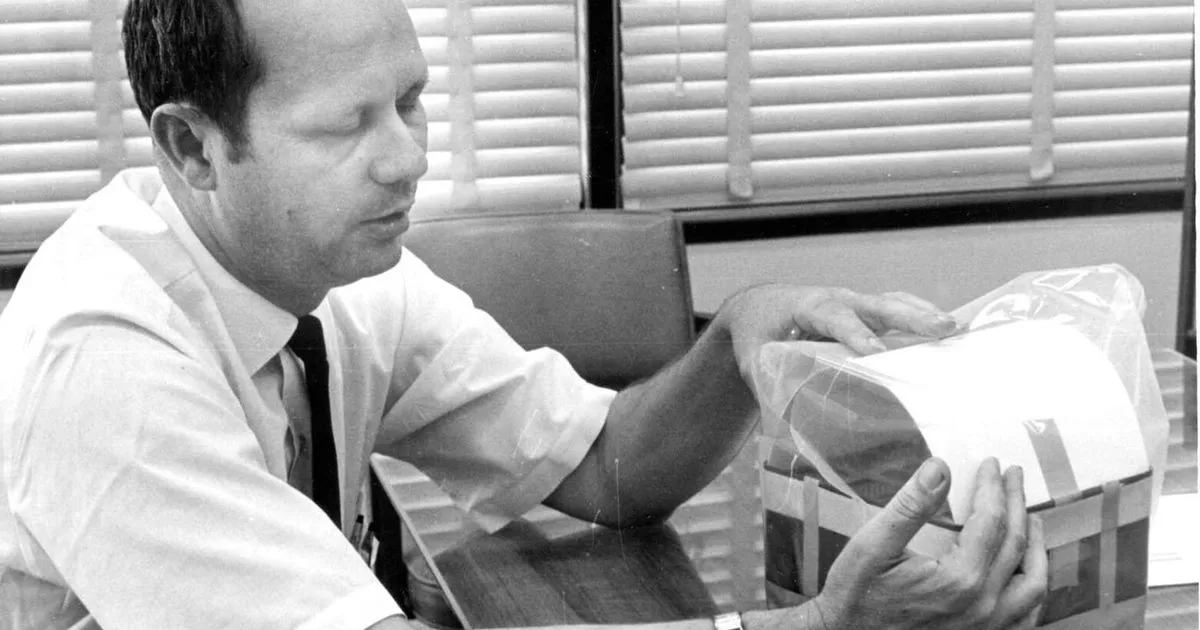
Robert “Ed” Smylie, the esteemed NASA official who played a pivotal role in saving the Apollo 13 crew in 1970, passed away on April 21 in Crossville, Tennessee, at the age of 95. His son, Steven, confirmed the news of his death at a hospice facility. Smylie was known for leading a team of engineers that ingeniously crafted a life-saving apparatus from cardboard, plastic bags, and duct tape after an explosion severely damaged the spacecraft en route to the moon.
The Apollo 13 mission became a hallmark of ingenuity and teamwork after an oxygen tank explosion crippled the spacecraft. Just two days after the incident, on April 17, 1970, President Richard Nixon recognized the mission operations team with the Presidential Medal of Freedom. During the award ceremony held at the Manned Spacecraft Center in Houston, Nixon specifically acknowledged Smylie and his deputy, James V. Correale, stating, “They are men whose names simply represent the whole team.”
On the fateful evening of April 13, while at home in Houston, Smylie received a distress call from astronaut Jim Lovell, who famously relayed, “Uh, Houston, we’ve had a problem.” An explosion had left the command module in jeopardy. Upon learning that the crew was retreating to the lunar excursion module, Smylie immediately recognized a critical flaw: the lunar module could only support two astronauts, while three were aboard. This potentially lethal situation necessitated a solution for managing carbon dioxide levels.
Smylie and his team had less than 48 hours to devise a method to adapt the square lithium hydroxide canisters from the command module to fit the round openings in the lunar module. “You can’t put a square peg in a round hole, and that’s what we had,” Smylie explained in the documentary “XIII” (2021). His determination to save the crew set the stage for a remarkable engineering feat.
In a race against time, Smylie, along with about 60 engineers, utilized materials already available on the spacecraft to create an adapter. Their innovative solution included two lithium hydroxide canisters, plastic bags, cardboard from the flight plan, a spacesuit hose, and, of course, duct tape. Smylie humorously remarked, “If you’re a Southern boy, if it moves and it’s not supposed to, you use duct tape.”
The NASA mission control team provided step-by-step instructions to the astronauts while maintaining a light-hearted atmosphere by joking about taxes, as it was April. The improvised adapter ultimately proved successful, allowing the astronauts to breathe safely in the lunar module for two crucial days while awaiting their return to Earth.
Born on December 25, 1929, in Lincoln County, Mississippi, Smylie’s journey began on his grandfather’s farm. After serving in the U.S. Navy, he pursued degrees in mechanical engineering at Mississippi State University. He joined NASA in Houston amid President John F. Kennedy’s ambitious moon landing goals. Rising through the ranks, Smylie became the chief of the crew systems division, responsible for life-sustaining equipment used by Apollo astronauts.
Smylie often downplayed his contributions, stating, “It was pretty straightforward, even though we got a lot of publicity for it.” His humility and focus on teamwork characterized his approach to engineering challenges.
Ed Smylie was married to June Reeves in 1954, a marriage that ended in divorce, and later married Carolyn Hall in 1983, who passed away in 2024. He is survived by his son Steven, daughters Susan Smylie and Lisa Willis, stepchildren Natalie and Andrew Hall, along with 12 grandchildren and 15 great-grandchildren.
Smylie’s ingenious use of duct tape during the Apollo 13 mission has solidified its status as a symbol of creativity and resourcefulness. Tisha Hooks noted in her dissertation, “Duct Tape and the U.S. Social Imagination,” that duct tape has become a cultural hero in American life, serving as a solution for everything from space missions to everyday problems. “From the Apollo 13 mission to the broken basement pipe,” Hooks wrote, “duct tape is there.”
Robert “Ed” Smylie’s legacy will endure as a testament to human ingenuity and the spirit of collaboration that defines NASA’s storied history.